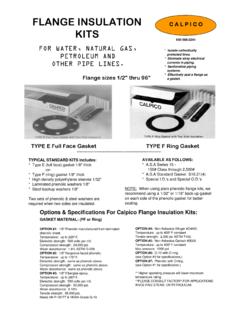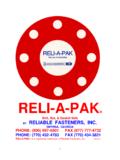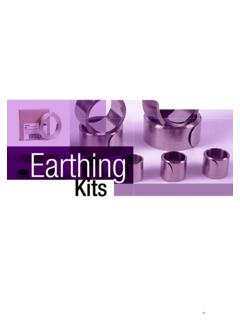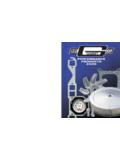Transcription of tinyTesla User Manual
1 IUser Manual v user ManualVersion 2016 oneTesla LLCIIUser Manual v list of errataYou are currently reading version of the tinyTesla user Manual . Before continuing, go to and check that is the most up-to-date version. If not, download the errata or the latest version of the Manual . This page will be continuously updated with kits may have the following extra parts, which are erroneous and may be omitted: n female molex connector n one surplus large ring terminal n one surplus 6mm screwIn of the Manual , on page 3, the color code for the 68 resistors R2 and R3 was incorrect. The correct color code is blue gray Step 6-J, regarding the fiber optic receiver, kit builders have noticed that soldering this component at too high a temperature can damage it. We are not exactly sure of the proper temperature range, but we recommend soldering at no higher than 400 extra IGBT testing procedure has been added to Step 15.
2 Some kits have stability issues with the USB interrupter. There are several fixes for this problem, which relates to the Zener diodes. The first option is to use a USB port and omit the Zener diodes. The second option is to replace the Zener diodes with Zener diodes. Contact us at if you need them sent to you. If you receive extra parts outside of the kit in your shipping box, they are for use in place of the parts in the kit. In particular, some shipments have replacement Zener diodes for the interrupter. Note added to glue down the bolt in the endcap during assembly. In Step 15, multimeter check of IGBTs section, sentence changed from Meter between pins 1 and 3 of X1, the large 3-pin connector. You should read open. to You should not read a dead short. Properly sized heat sink template references to the tinyTesla interrupter chassis as it is purely cosmetic and will no longer be included in the to heat shrink removed, please use eletrical tape secondary should read approximately 450 , not should be on pin 6, not 8 of the wire is no longer are now 4A instead of check IC5, the LM7815 15V voltage regulator.
3 Some kits may have an LM7915 instead, which will not work. Please contact us for a replacement at 2015 March 2015 April 2015 May 2015 June 2015 September 2015 May 20161 user Manual v !With tinyTesla you ll learn about electronics, flex your soldering muscles, shoot lightning, and play music using electricity! A Tesla coil is a device that uses resonant circuits and alternating current to produce extremely high voltages. Originally invented by Nikola Tesla in the late 1800s, Tesla coils have progressed from spark-gap circuits to designs involving modern solid-state switching devices such as MOSFETs and IGBTs. While there are many types of Tesla coils, what they all have in common are air-cored induction coils. Using a Tesla coil is the best way to produce a continuous high-voltage ve designed a Tesla coil kit that s both easy to build and beautiful.
4 tinyTesla is an SSTC, or solid state Tesla coil, which balances performance, musical ability, and reliability. But be careful! Building hardware can be tricky if you re inexperienced or don t have the proper equipment. Work with good tools, pay close attention, and ask for help when you need it. Most of all, have fun!Need help? Go to our support forum at replacement parts? Contact us at out all of our educational tutorials at out our other kits at !What s in the tinyTesla kit?Feedback antennaPrimary coilUSB-MIDI interrupter (shown here with chassis that is no longer included in the kit)Fiber optic transmitterFiber optic receiverFiber optic cableSpun aluminum toroidBreakout pointSecondary coilAC power cableinterrupter (shown Note: We try our best to keep all images and instructions consistent with the latest revision of the tinyTesla hardware, but the photos in this Manual and on our website are not always identical to the components you receive in your kit.)
5 They will, however, maintain the same Manual v WarningsAdult Supervision RequiredUsers under 18 should only use this kit under the supervision of an experienced WarningPersons with electronic medical implants such as pacemakers should not be near the Tesla coil during operation. EMI from the coil may interfere with the pacemaker s WarningThe high temperature of the Tesla coil streamers causes the gases that make up air to form other compounds, including ozone (which can often be smelled when the coil is in operation) and nitrogen oxides. Keep the Tesla coil work area well-ventilated to prevent the buildup of irritating gases such as ozone and nitrogen oxides, which become toxic if concentrated. Fire HazardThe arcs from the Tesla coil can set flammable objects on fire. Keep all flammable objects away from the Tesla coil while it is in operation.
6 Ear Protection RecommendedThe Tesla coil output is loud! Ear protection is Glasses RequiredAlways wear eye protection while soldering. Power semiconductors may overheat and fail violently, causing a shrapnel hazard. Wear safety glasses when working on the board while it is energized. Only power up the board when it is fully enclosed inside the chassis. RF WarningKeep sensitive electronics away from the Tesla coil at all times. Use the entire length of the included fiber optic cable to distance your computer from the Tesla Manual v you beginBe up-to-dateEnsure you have the latest version of the Manual , and if not, download the errata sheet or the newest version at Read the tutorialsAll of our tutorials can be found at Soldering tutorial n De-soldering tutorial n How a Tesla coil worksn Heat sink hardware installationn Main board s logic component installationn Low voltage driver board testn Main board s power component installationn IGBT installation Observe good workspace practicesnKeep your workspace neat and orderly.
7 N Always obey common sense. n Do not continue work if at any point you feel uncomfortable with the hazards a challenging electronics project poses. n Use caution when soldering! Lead is hazardous, and the iron is extremely the right equipmentHaving the proper tools for electronic assembly, particularly a powerful enough soldering iron, will make your life much easier! Here are the tools you need to assemble your Tesla coil: n temperature-controlled soldering iron, 40W minimum n rosin-core solder of an appropriate thickness n safety glasses n small pliers n flush cutters n wire strippers n small screwdriver n hot glue gun n multimeterOptional but useful:npacking tape n masking tape n solder wick or other desoldering toolsYou will also or paint-on polyurethane varnish n a mini USB cable to connect to the tinyTesla interrupter n a laptop running 1T Panel or other MIDI control softwareSTEP 1:Assemble the interrupterThe interrupter is the Tesla coil s music controller.
8 It connects via a mini USB cable to a computer, and appears as a MIDI device. Assemble it first because you will need to use it to ensure the low-voltage side of the main driver board is working. The interrupter is also a small board with few parts, which if soldered correctly should work right Install R1 through R4. B. Install C1. C. Install CN1, the mini USB connector. D. Install zener diodes D1 and D2. Note that they are directional! Match the band on the diode to the band on the board. Don t confuse them with the 1N4148 signal diodes, which look the same except for their part Install the socket of IC1. Do not solder the ATtiny directly to the board! Make sure that the notch on the socket matches the notch on the board. Do not solder the socket with the ATtiny inserted!F. Insert the ATtiny into its socket, making sure that the dot on the chip is on the same side as the notch on the socket.
9 G. Install IC2, the optical transmitter. Be careful! This component is delicate. Secure it with a bolt and nut before soldering it in. H. Install the slide t worry, the ATtiny microcontroller in your kit is already programmed. If you ever need to re-program your ATtiny, install a 6-pin header. Since your ATtiny comes programmed, we didn t include one. R1 (brown green red) R2, R3 68 (blue grey black)R4100 (brown black brown) C1 1uF (labeled 105)CN1mini USB connectorD1, D2 Zener DiodesIC1 ATtiny and socket IC2optical transmitterslide switch4 user Manual v 2: Troubleshoot the interrupterThe interrupter is powered over USB and can be controlled using our 1T Panel software available for download at You will need a mini USB cable to connect to the interrupter. It behaves like a MIDI device and can also be controlled via other MIDI software.
10 See Appendix A for a description of 1T interrupter has two modes: Live mode (switch to the right) and Fixed mode (switch to the left). Note: every time you want to switch modes, you need to power cycle (unplug and plug back in) the the switch in the Live mode position (right-hand side). This places the interrupter into MIDI mode. Using a mini USB cable, connect the interrupter to a computer. Confirm that the USB device is recognized and does not throw an error. Use 1T Panel to raise and lower the power and confirm that the LED in the fiber optic transmitter raises and lowers in brightness help?If you encounter a problem that isn t covered here, take a look at our online help forum at Someone else may have had the same problem and figured out a solution. Please post on the forum rather than emailing us for support, so that everyone can learn from how you resolved your problem!








